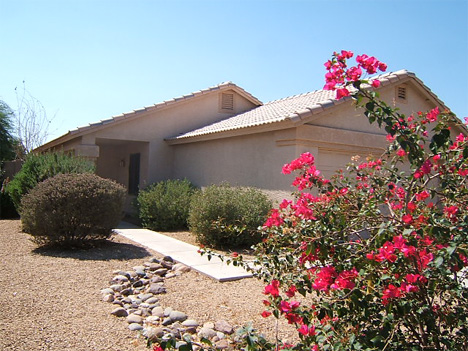I represented tenants for my first two years as a real estate licensee. I walked into — and walked right out of — hundreds of homes that were amazingly inappropriate candidates for tenancy.
Horrible locations, with no access to jobs, schools, shopping, entertainment, transportation.
Still worse, horrible homes, dingy, run-down testaments to the perils of deferred maintenance.
And still worse, many of these homes would be filthy — stained carpets, smudged walls, debris everywhere. In many cases, the carpets had not even been vacuumed, and often the back yards were shoulder-high jungles of weeds.
Would you want to live in a place like that?
Why would you expect that a tenant would?
Here’s a better question: What kind of tenant, do you suppose, would settle for a rental home like that?
Landlords can be penny-wise and pound-foolish. They will buy a dump of a property because it’s cheap, convinced that their salvation will be low rents. But bad properties attract bad tenants — by repelling all of the good tenants.
The wrong rental property is the worst kind of real estate investment: It will rent slowly, with long vacancies between tenants. And the tenants the landlord will be forced by circumstance into accepting may be slow-pay, no-pay eviction candidates who may do damage or steal the appliances on the way out. And, of course, because the house is repellant, it will attract nothing but low-ball offers on resale.
But take heart. There is a better way of doing things.

First, what you want is the right location — a built-out suburb with its own job base, with schools and shopping and entertainment already in place. And don’t buy a dump. Nobody wants to live in a dump. The house you’re looking for should be appealing to tenants, but also to owner-occupants. Why? Because owner-occupants will pay more than investors when it’s time to sell.
But even then we’re not done. We’ve got the right house in the right location, but we also need to refurbish the home to turn-key condition. Why is that? Because tenants — especially premium tenants — have choices. We want for our home to be first on their list of candidates, when they go out shopping. That way, you will have your choice of top-quality applicants: Good jobs, good income, good credit, good payment histories, good real estate references.
A home like this will rent quickly, will stay rented, and — if you continue to maintain it in turn-key condition — will suffer little vacancy between tenants. Moreover, your tenants will treat your home as if it were their own, so your costs between tenants will be lower. And because we chose the property with resale value in mind, it should sell quickly and at a premium price, ideally to owner-occupants.
This is a sound business strategy. Your objective is to make money. This is the way to make money in the suburban-Phoenix rental housing market.
I’ve written a guide on how to make money by investing in rental homes in Metropolitan Phoenix. It covers these issues in more detail, with a video explaining my thoughts on home selection. There are also before and after photos of a real rental home, to illustrate what I think is necessary to make a property appealing to premium tenants.
If you want to discuss Phoenix-area rental home investment in more detail, you can phone me at 602-740-7531 or just shoot me an email.
Being a landlord is not easy, and very often it is decidedly not fun. But it is potentially very lucrative — if you go at it the right way.



